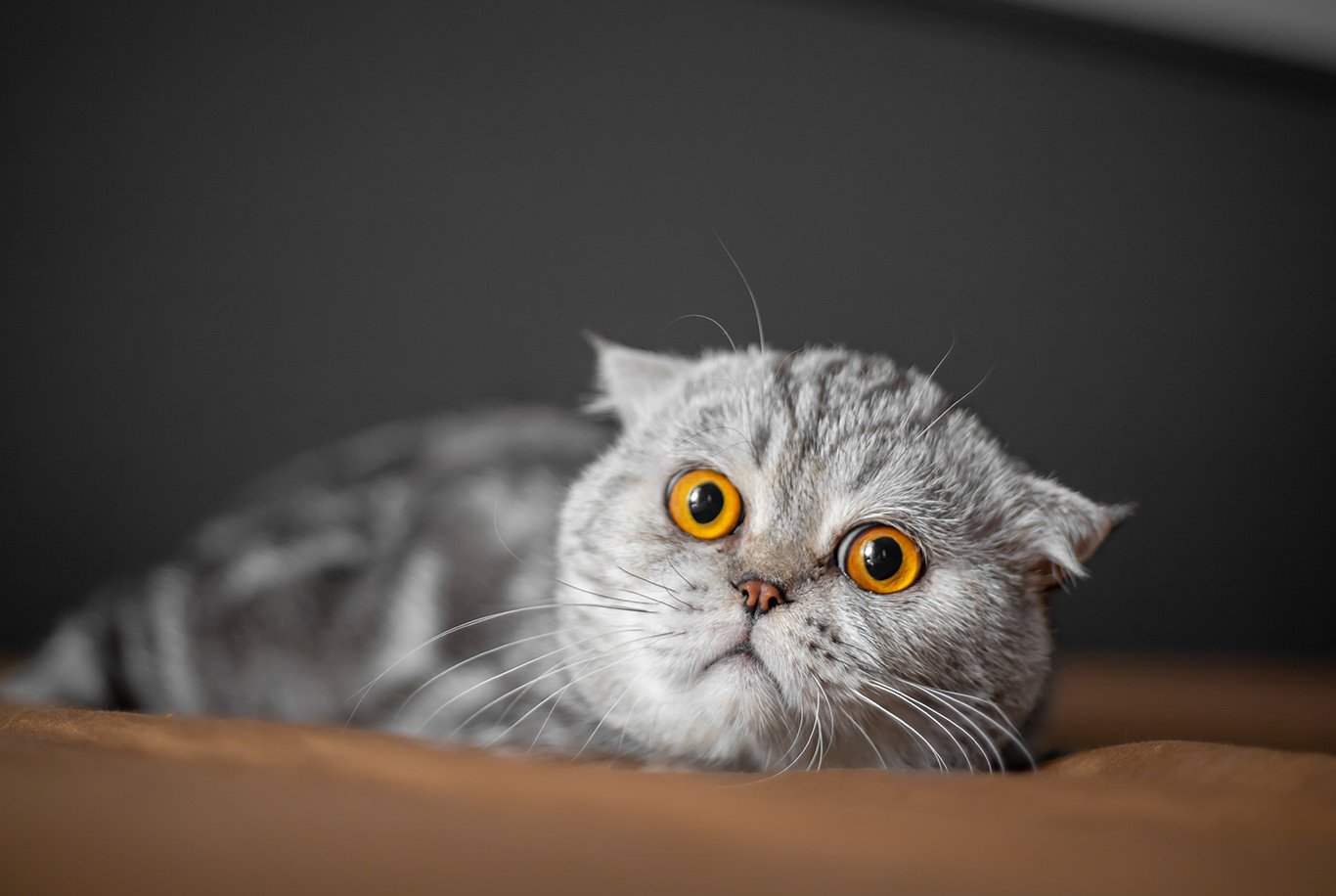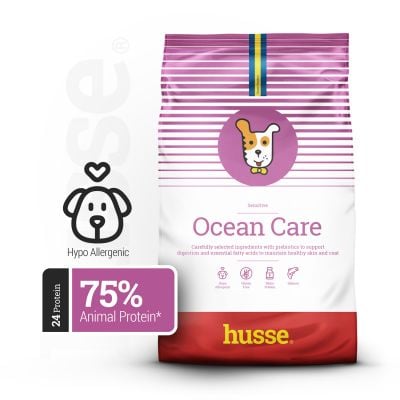Scottish Fold
Cat breed with characteristically folded ears

Scottish fold is a medium-sized cat breed with famous folded ears.
 Country of origin: Country of origin: |
Country |
 Personality: Personality: |
Obedient, Intelligent, Alert, Curious, Loyal, Confident, Watchful, Courageous |
 Coat: Coat: |
Shorthair |
 Colour: Colour: |
Black, Black & Tan, Sable, Red & Black, Grey, Black & Silver |
 Characteristics: Characteristics: |
Curly coat, short tail |
 Life expectancy: Life expectancy: |
from 9 to 13 years |
Scottish fold kittens
Scottish fold is a breed of intelligent and gentle cats. They can easily adapt to new circumstances and people - kittens should rather quickly get comfortable at their new home. Although the breed is known for its folded ears it’s worth noting that kittens are born with ears resembling those of other cats and the fold appears sometime between 3rd and 4th week of their life. Just like with any other kittens, positive reinforcement training proves to be the most efficient teaching technique. Scottish fold cats have a tendency to bond particularly strongly with one single person in the household, but they will gladly receive affection from any member of the family. By figuring out which family member is your cat’s favourite you can get even better results in training, as your cat can be much more cooperative in the presence of his most trusted person. Always remember to have treats handy. They are a great reward for good behaviour around the house or for correctly performed tricks. Kycklingfile or Tuna Recipe are healthy snacks made from natural ingredients that will motivate even the most picky felines. Bare in mind that a healthy and well-balanced diet can greatly influence your kitten’s development and growth. Kattunge is a dry cat food for kittens that will provide your feline with all necessary nutrients.


Scottish fold nutrition
Although scottish fold cats do like to play they are not the most active breed out there. They also love to eat, so you should monitor your cat’s weight and daily food intake. Feed your scottish fold cat on a schedule and try to avoid feeding ad libitum. Cats do not enjoy drinking still water and will get the majority of their daily water intake from their food. Better stick with wet cat food that is appropriate for your cat’s age. High quality chunks in gravy or pates without artificial preservatives or soy will be a great and tasty maintenance diet that you can easily spice up with some healthy treats made with only fresh ingredients. If your cat is used to dry food you can mix it with wet food if you want to incorporate more fluids into your feline’s nutrition. Everytime you are introducing a new diet, give your cat a transition period, so the digestive tract can get used to new foods. Scottish fold cats are somewhat prone to joint pain and stiffness - you can enhance their diet with Artro supplements supporting joint health. Older cats can be fed a diet rich in glucosamine, such as Lynx Senior.
Opus Farm | Complete, grain free nutrition for active dogs with sensitive stomachs
Opus Lynx | Complete, grain free nutrition for adult cats
Detailed description of breed
Scottish fold is a breed of cats with folded ears. The shape that became the distinctive feature of the breed appears in kittens after they turn 3-4 weeks old.
Genesis
William Ross, living on a farm near Coupar Angus in Scotland, one day spotted a white barn cat with a peculiar fold in her ears. Ross named the cat Susie and kept her to see if she would bear kittens with such odd ear shapes. Two kittens from Susie’s litter did have folds in their ears. Fascinated by the cat’s appearance William with his wife Mary began breeding cats with folded ears in 1966 and named the breed scottish fold. Ross registered the breed with Governing Council of the Cat Fancy (GCCF) and had geneticist Pat Turner join him to work on the breeding program. In the first three years 76 kittens were born with 42 having their ears folded and remaining 34 with straight ears. Despite its charm, the scottish fold breed was not accepted for showing in Europe. Even worse, in 1971 GCCF withdrew breed registrations due to deformity of the limbs and tail in some cats and concerns about genetic difficulties and ear problems. In 1977 scottish fold gained its breed status with CFA.
Appearance
The distinguishing feature of scottish fold cats are, of course, the folds in their ears. Although it is worth mentioning that there are some cases of scottish fold cats with straight ears. Scottish fold cats are medium in size, with a sturdy body and round head. They have big and wide open eyes that should correspond with the colour of the fur. Scottish fold cats have quite short legs, medium in length tail that is thick at the base. Their fur is dense and springy and can come in a vast variety of colours excluding: lilac, chocolate and typical for siamese cats colourpoint.


Character
Scottish fold cats are known for their tendency to adapt well to various living conditions. They get used to new situations or people quite fast. They tend to get along well with other house pets. Scottish folds are intelligent, gentle and loyal cats. Often they form a particularly strong bond with a single person in their household, but they will never reject attention or affection coming from other family members. Scottish folds have a lovely and soft voice. They like to play and have a strong prey drive which keeps them physically active for longer.
Requirements
Scottish fold cats are known for having a strong prey drive and they can need a bit more physical activity than other cats do. Cats of this breed are known for staying in shape longer, compared to other cat breeds, so playtime is particularly important for this feline. Scottish folds can show some signs on joint stiffness in their tails, so be very gentle when handling your cat’s tail.
Daily care
Dense fur of a scottish fold cat requires regular brushing at least once a week. Folded ears should be frequently checked to prevent any infections or inflammations from happening. Trimming your indoor cat’s nails will help keep them clean and in good condition.
 dr Anna Plummervet and blogger
dr Anna Plummervet and blogger
































